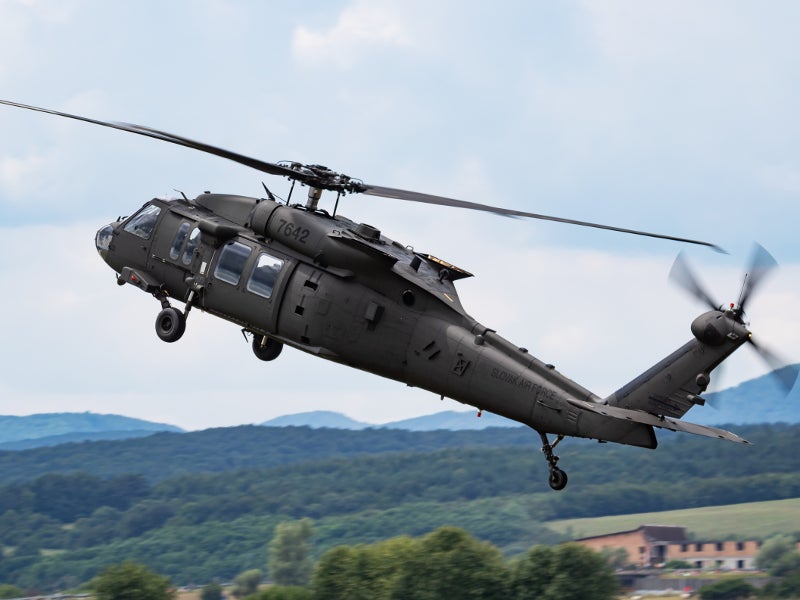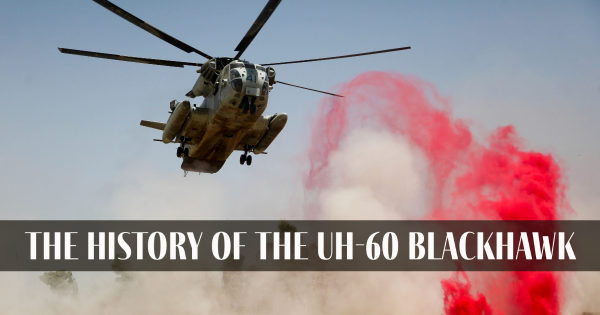Mastering the Skies: UH 60 Helicopter Upkeep Checklist
Mastering the Skies: UH 60 Helicopter Upkeep Checklist
Blog Article
Understanding the Mechanics and Design Behind Uh 60 Helicopters
The UH-60 helicopter, commonly known as the Black Hawk, stands as a pinnacle of modern rotorcraft technology, embodying a blend of robust engineering and intricate technicians. As we peel back the layers of the UH-60's layout, a globe of detailed systems and meticulous design comes to light.
Background of UH-60 Helicopters
The history of UH-60 helicopters traces back to the late 1970s when the United States Military looked for a advanced and functional energy helicopter to replace its aging fleet. In response to this demand, the Sikorsky Airplane Company developed the UH-60 Black Hawk helicopter. Presented in 1979, the UH-60 swiftly became a staple in military operations because of its impressive capacities.
The UH-60 was created to master a selection of objectives, including army transport, clinical emptying, electronic war, and special procedures. Its ability to adjust to different duties made it a useful asset to the united state Army and various other military pressures around the world
For many years, the UH-60 platform has actually undergone numerous upgrades and variations to boost its performance and equal progressing mission demands. These helicopters have actually seen considerable service in disputes such as the Gulf Battle, Afghanistan, and Iraq, showcasing their dependability and convenience in diverse functional settings. The UH-60's rich background is a testimony to its enduring tradition as a top utility helicopter.

Engine and Power Systems
Utilizing cutting-edge propulsion modern technology, UH-60 helicopters are outfitted with innovative engine and power systems to make sure ideal performance and integrity in a variety of operational circumstances. The UH-60, generally called the Black Hawk, is powered by two General Electric T700-GE-701D engines, each efficient in supplying up to 1,940 shaft horsepower. These turboshaft engines provide the essential drive for the helicopter to perform its missions successfully, including army transportation, medical discharge, and battle support.

Rotor System and Aerodynamics
How do the blades system and the rules of aerodynamics of UH-60 helicopters add to their functional effectiveness and flight abilities? The rotor system of the UH-60 helicopter plays an important role in offering lift and propulsion. The UH-60 features a four-bladed, fully expressed blades system that permits high maneuverability and stability during trip. This layout makes it possible for the helicopter to do a wide variety of objectives, from transport and medical discharge to battle procedures.
The rules of aerodynamics likewise play a key role in the performance of UH-60 helicopters. The structured body and rotor blade design lower drag, permitting the helicopter to attain higher speeds and better gas performance. The wind resistant style of the UH-60 also adds to its ability to operate in diverse environmental conditions, including hot temperature levels and high altitudes.
Avionics and Flight Control Equipment

In its complex control with the rotor system and aerodynamics of UH-60 helicopters, the avionics and flight control systems develop a critical network of technologies shaping the aircraft's functional capacities. In the UH-60, these systems consist of electronic displays, communication radios, GPS navigating, climate radar, and auto-pilot systems.
The trip control systems of the UH-60 are in charge of translating the pilot's inputs into the suitable modifications to the rotor read system, making sure steady trip and ability to move. These systems are composed of hydraulic actuators, servos, and computer systems that function this with each other to regulate the major and tail blades, along with various other trip control surface areas. By exactly handling the helicopter's flight dynamics, these systems allow pilots to carry out a large range of objectives, from transport and search-and-rescue to combat operations, with accuracy and confidence.
Function and Applications in Aviation
The function and applications of avionics and flight control systems in aviation are indispensable to making certain the secure and reliable operation of airplane, consisting of UH-60 helicopters. Avionics systems in UH-60 helicopters incorporate an array of digital systems that aid in navigation, interaction, surveillance, and regulating different aircraft features. These systems consist of digital displays, auto-pilot systems, interaction radios, GPS navigating tools, and weather condition radar. Trip control systems play a crucial function in navigating the helicopter in the air, keeping stability, and ensuring exact activities. The fly-by-wire technology made use of in modern UH-60 helicopters equates pilot inputs into electronic signals, which are then translated by the flight control computers to readjust the aircraft's control surface areas. Furthermore, these systems incorporate safety click here now and security features such as auto-pilot modes, surface understanding warning systems, and security enhancement systems to enhance the total security and functional capabilities of the UH-60 helicopters in numerous missions, consisting of troop transport, clinical evacuation, search and rescue, and airborne firefighting.
Final Thought
Finally, the UH-60 helicopter is a versatile aircraft with a rich background and progressed design. Its engine and power systems, blades system, the rules of aerodynamics, avionics, and flight control systems all interact to make it a effective and trustworthy machine. The UH-60's role and applications in aviation are vast, varying from army procedures to search and save missions. Its continued development and use demonstrate its importance in the field of aviation (uh 60).
In its elaborate coordination with the rotor system and the rules of aerodynamics of UH-60 helicopters, the avionics and trip control systems develop a crucial network of modern technologies forming the aircraft's operational capabilities.The trip control systems of the UH-60 are liable for equating the pilot's inputs into the appropriate changes to the blades system, making sure steady flight and ability to move. Avionics systems in UH-60 helicopters include a variety of electronic systems that help in navigation, communication, monitoring, and regulating different aircraft features. Furthermore, these systems incorporate safety attributes such as auto-pilot modes, surface understanding cautioning systems, and security enhancement systems to enhance the total security and operational abilities of the UH-60 helicopters in various goals, including army transportation, medical emptying, search and rescue, and aerial firefighting.
Its engine and power systems, blades system, aerodynamics, avionics, and trip control systems all work with each other to make it a reputable and reliable maker.
Report this page